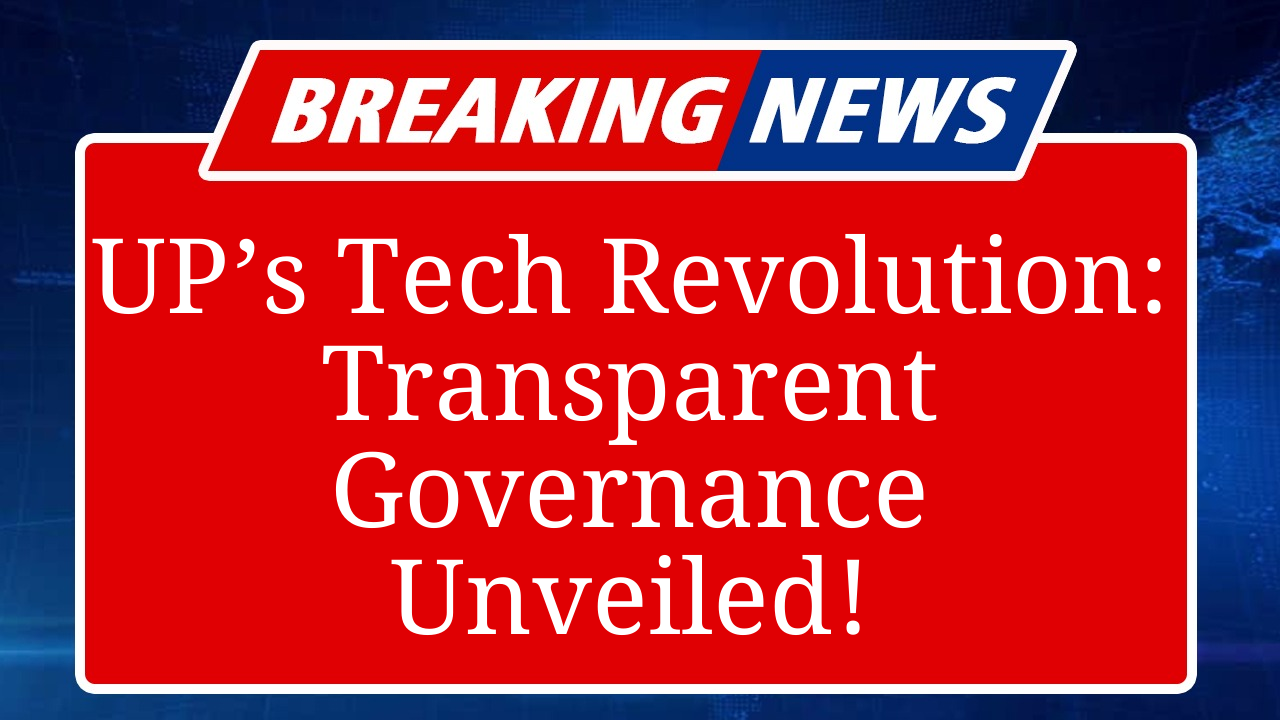“Uttar Pradesh’s Digital UP initiative is revolutionizing governance with real-time tech solutions, enhancing transparency and efficiency. From e-governance platforms to blockchain-based systems, UP is streamlining public services, reducing corruption, and empowering citizens. With robust digital infrastructure, the state is setting a benchmark for administrative reforms, ensuring seamless access to services and fostering trust in governance.”
Digital UP: Pioneering Transparent Governance Through Technology
Uttar Pradesh (UP), India’s most populous state, is undergoing a transformative shift in governance through its Digital UP initiative, leveraging cutting-edge technology to ensure transparency, efficiency, and accessibility in public administration. Launched as part of the broader Digital India framework, Digital UP integrates advanced digital tools to modernize governance, reduce bureaucratic inefficiencies, and foster trust between the government and citizens.
At the heart of Digital UP is the adoption of e-governance platforms that streamline access to public services. The state’s flagship portal, the UP e-Governance Platform, enables citizens to access over 300 services online, including land record management, bill payments, and grievance redressal. As of August 2025, the platform has processed over 12 crore transactions, with 78% of services delivered within stipulated timelines, according to data from the Uttar Pradesh State e-Governance Agency. This digital shift has eliminated the need for physical visits to government offices, reducing opportunities for corruption and bureaucratic delays.
Blockchain technology is a cornerstone of Digital UP’s transparency push. The state has implemented blockchain-based systems for land records and certificate issuance, ensuring tamper-proof documentation. By September 2025, over 3.5 crore land records have been digitized and secured on blockchain, minimizing disputes and fraudulent transactions. The UP Blockchain Platform, developed in collaboration with the National Informatics Centre (NIC), ensures secure, transparent transactions for KYC authentication and document verification, aligning with global standards for data integrity.
The integration of Artificial Intelligence (AI) is enhancing governance efficiency. AI-powered chatbots, such as the UP Citizen Assistant, handle over 1.2 lakh queries daily, providing real-time solutions in Hindi, English, and regional dialects. Additionally, AI-driven analytics are being used to monitor welfare scheme disbursements, ensuring funds reach intended beneficiaries without leakages. For instance, the Direct Benefit Transfer (DBT) system, linked with Aadhaar, has facilitated transparent disbursal of ₹15,000 crore to 2.8 crore beneficiaries in 2025 alone, as per the UP Finance Department.
Uttar Pradesh’s digital infrastructure has seen significant upgrades, with BharatNet Phase II providing high-speed broadband to 59,000 gram panchayats by mid-2025. This connectivity boom has bridged the urban-rural divide, enabling rural citizens to access e-services through Common Service Centres (CSCs). Over 1.5 lakh CSCs across UP offer services like digital literacy training, Aadhaar enrollment, and online application submissions, empowering 4.2 crore rural citizens, according to the Ministry of Electronics and Information Technology (MeitY).
The Government e-Marketplace (GeM) has revolutionized procurement in UP, ensuring transparency in government purchases. In 2025, UP recorded ₹8,500 crore worth of transactions on GeM, offering 12,000 product categories and 350 service categories, as reported by the UP Procurement Department. This platform has curbed favoritism and ensured competitive bidding, saving an estimated ₹1,200 crore annually.
Digital UP also emphasizes digital literacy to ensure inclusivity. The state’s Digital Saksharta Abhiyan has trained 2.3 crore citizens in basic digital skills since 2023, with a focus on women and marginalized communities. Partnerships with tech giants like Google and Microsoft have bolstered these efforts, providing free training modules and certifications. Additionally, the state’s cybersecurity framework, aligned with the National Cyber Security Policy 2020, protects citizen data with robust encryption and regular audits.
Emerging technologies like the Internet of Things (IoT) are being piloted in UP to enhance urban governance. IoT-enabled sensors in cities like Lucknow and Kanpur monitor air quality, traffic, and waste management, feeding real-time data to municipal dashboards. The Smart Cities Mission in UP has deployed 1,200 IoT devices across 17 cities, improving urban planning and resource allocation, as per the UP Urban Development Department.
Despite these advancements, challenges persist. The digital divide remains a hurdle, with rural internet penetration at 38% compared to 72% in urban areas, as reported by the Telecom Regulatory Authority of India (TRAI) in 2025. Cybersecurity threats and the need for continuous infrastructure upgrades also pose concerns. However, the state’s commitment to expanding 5G coverage, with 2.1 lakh 5G towers installed by August 2025, signals a proactive approach to addressing these gaps.
Digital UP’s integration with the India Stack—comprising Aadhaar, UPI, and DigiLocker—has created a seamless digital ecosystem. UPI transactions in UP reached 320 crore in the first half of 2025, reflecting widespread adoption of digital payments. DigiLocker, with 4.8 crore users in UP, has eliminated the need for physical documents, further enhancing transparency.
The state’s focus on startups is fostering innovation in governance tech. UP’s startup ecosystem, supported by the UP Startup Policy 2020, has nurtured 12,000 startups, with 150 specializing in gov-tech solutions. These startups are developing AI and blockchain tools to enhance public service delivery, positioning UP as a hub for digital innovation.
Disclaimer: This article is based on real-time data and reports from government sources, including the Uttar Pradesh State e-Governance Agency, UP Finance Department, UP Urban Development Department, MeitY, NIC, and TRAI. Information has been cross-verified with reputable news outlets and official publications. Readers are advised to verify details with primary sources for critical decisions.

